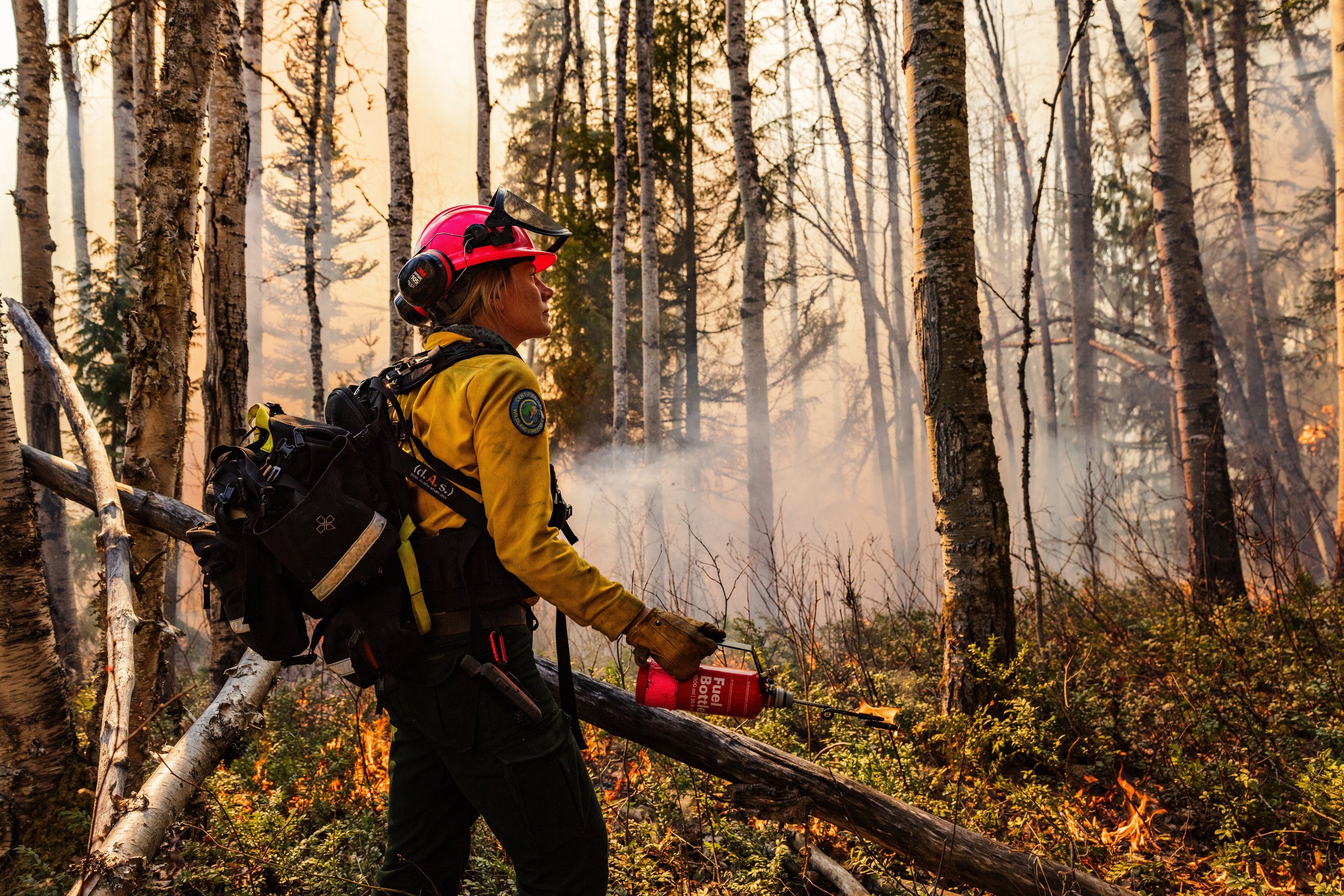Dr. Kira M. Hoffman
Research Associate & Professional Fire Ecologist

I’m currently a postdoctoral fellow at the University of British Columbia studying increasingly unpredictable and severe wildfires in British Columbia. I’m working to reduce barriers and build capacity to support the revitalization of cultural and prescribed fire to mitigate wildfire risk in forests surrounding remote communities.
I'm currently working with BC Parks and the University of Victoria to understand historic meadow dynamics in Helliwell Provincial Park located on Hornby Island, British Columbia. The purpose of this research is to assess habitat suitability for the reintroduction of critically endangered Taylor's Checkerspot butterflies, which were extirpated from Hornby Island in the 1990s. Taylor's Checkerspots depend on open Garry oak meadows that were historically managed with cultural fire. Therefore, we are reconstructing historic fire activity and mapping changes in meadow dynamics through time. Specifically, we are looking at how mechanical thinning of conifers, planting of native grasses, and prescribed burning can help restore Garry oak ecosystems.
In 2018, I worked as an ecologist monitoring the Telkwa and Tweedsmuir caribou herds in northern British Columbia.
The fall rut survey in the Telkwa Mountains.
Looking west towards Burnie-Shea Provincial Park.
Millicent lake
My PhD research examined the long-term fire history of temperate rainforests located on the Central Coast of British Columbia, Canada. My research is primarily located in the Hakai Lúxvbálís Conservancy on Calvert and Hecate Islands (N 51º 38 W -128º 05). I'm very interested in human and climate drivers of historic fire regime variability and how First Nations traditionally used fire as a tool for resource management. More details on my research can be found here https://www.hakai.org/research/kwakshua-watershed-program/fire-history-hecate-island
One of the many amazing things about conducting research in remote places is the flora and fauna I encounter and I always have my camera and binoculars at the ready. This coupled with crouching in uncomfortable positions in silence and rising regularly at 5 am increases the probability of crossing paths with cryptic creatures. Here are a few of my favorite images.
In 2012, I conducted a baseline survey of plant species in Edziza Provincial park, British Columbia in order to assess to what extent invasive plant species are present and how best to manage them. Ranges of invasive species are expanding as a result of an increasingly warmer and drier climate. I recorded five new invasive species that were not previously documented in the Park and I plan to resurvey this 120 km transect in 2017 to assess further changes in plant community composition.
I worked as a research assistant in the University of Victoria Tree Ring Lab examining Holocene age glacial advances and recessions and how vegetation, climate and landscapes have changed through time. Our research involved sampling and dating trees previously killed by advancing glaciers at Scimitar, Confederation, and Queen Bess glaciers. My research focused on a 100 year re-survey of Bromley Glacier in the Boundary Ranges of Northern British Columbia, Canada where we documented several late Holocene glacial advances.
Some of my favourite images of the adventures I've had.